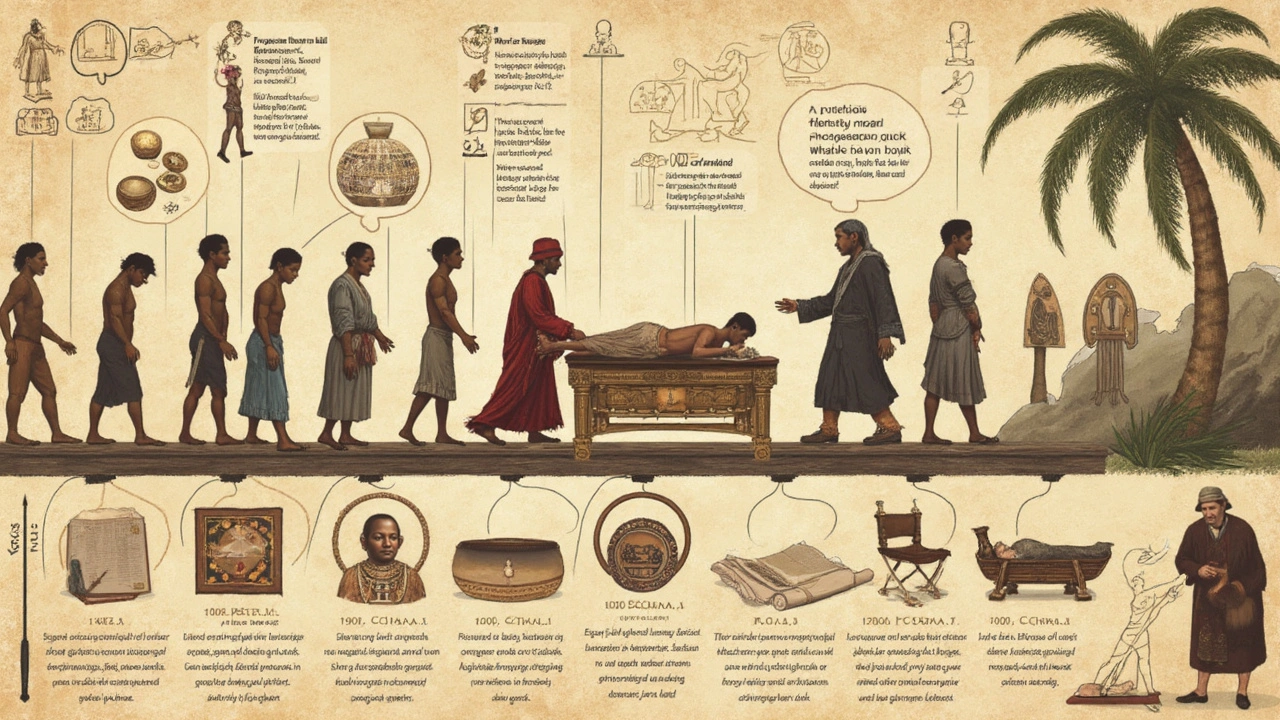Massage History: From Ancient Rituals to Modern Wellness
Ever wonder why a simple rub feels so good? The answer lies in thousands of years of touch therapy. Knowing the backstory helps you spot real skill versus hype, and it makes picking a session feel easier.
Early Roots of Touch Healing
People in ancient Egypt used oil‑based rubs to ease sore muscles after building pyramids. In China, around 2700 BC, practitioners pressed meridian points to keep the body’s energy flowing. The Greeks took it a step further: Hippocrates wrote that “massage is a remedy for disease.” Romans built communal baths where slaves gave full‑body rubs to relax muscles after training.
These early methods shared one thing – a belief that hands could move pain, improve circulation, and boost mood. The techniques were simple, but the idea stuck, spreading across continents.
How Modern Techniques Evolved
Fast forward to the 1800s. Per Henrik Ling created Swedish massage, a systematic blend of strokes designed for health, not just luxury. In the early 1900s, sports teams hired therapists to keep athletes in shape – the birth of sports massage. By mid‑century, doctors began using massage for post‑surgery recovery, turning it into a clinical tool.
Today you’ll see hot‑stone, lymphatic drainage, and deep‑tissue styles. Each modern branch pulls from an old tradition – hot stones echo the heated rocks used by Native American healers, while lymphatic work mirrors ancient drainage techniques described in Ayurvedic texts.
Understanding where a style comes from can guide your choice. Want a gentle, circulation‑boosting session? Look for Swedish roots. Need intense muscle release? Deep‑tissue traces back to the strong‑handed techniques of 20th‑century athletes.
Another practical tip: therapists who respect the history often train in multiple schools. That mix usually means they can customize pressure, pace, and focus areas to fit your body’s unique needs.
So, the next time you book a full‑body massage in London, ask a quick question about the method’s background. A knowledgeable therapist will happily explain how their approach fits into the centuries‑old lineage of touch healing.
Bottom line: massage isn’t a new fad; it’s a proven practice that’s evolved with culture and science. Knowing its history makes the experience richer and helps you get the most out of every session.
Full Body Massage History & Evolution
Explore the centuries‑long journey of full body massage, from ancient Egyptian healing rituals to modern scientific validation, and learn key tips for safe, effective sessions.
VIEW MOREHistory and Evolution of the Massage Therapist Profession: From Ancient Roots to Modern Practice
Explore how massage therapy started centuries ago and evolved into the respected profession we know today. This article covers not just the highlights of its history but also how it grew through different cultures and ages. Learn about the benefits, modern types, and how to find the best services near you. Get practical tips for your first session, including what to expect and how much it might cost. Whether you’re curious about ancient healing or ready to book, you’ll find it all here.
VIEW MORE

